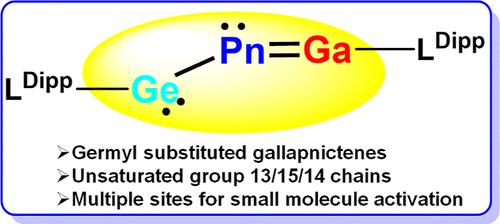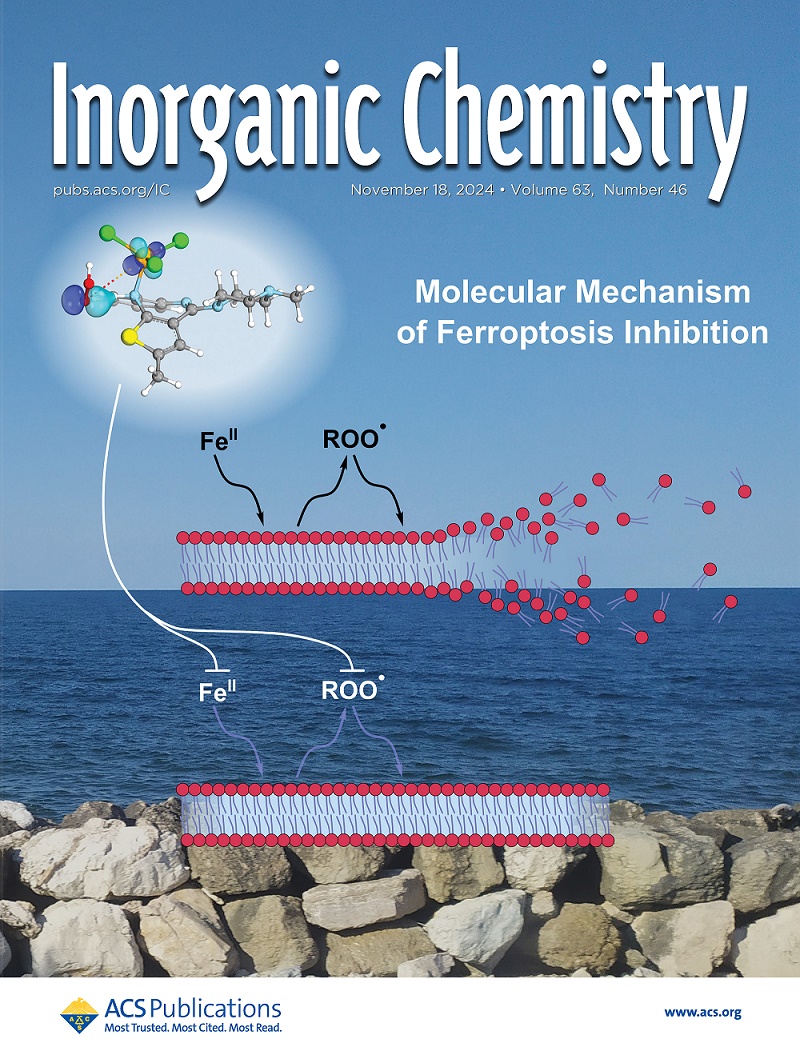Synthesis and Reactivity of Germyl-Substituted Gallapnictenes
IF 4.3
2区 化学
Q1 CHEMISTRY, INORGANIC & NUCLEAR
引用次数: 0
Abstract
Decarbonylation of the phospha- and arsaketenyl germylenes (L)GeECO (E = P, As; L = CH[C(Me)NAr]2, Ar = 2,6-iPr2C6H3) in the presence of the Ga(I) precursor (L)Ga afforded the corresponding germyl-substituted gallaphosphene 1 and gallaarsene 3, respectively. Both 1 and 3 are examples of unsaturated chains with heavier group 13/15/14 elements. The germylene center and the polarized Pn = Ga (Pn = P or As) double bond provide multiple sites for small-molecule activation. For example, gallaarsene 3 reacted with adamantyl azide in a formal [3 + 2]-cyclization to give 4 containing a GaAsN3 heterocycle, clearly underlining the analogy between the As = Ga and C–C multiple bonds. By contrast, the reaction of 3 with Me–I afforded the 1,3-addition product 5, which indicates frustrated Lewis pair character in 3. DFT calculations indicate that the Ga–P/As bonds are highly polarized toward the pnictogen center. EDA-NOCV calculations further support this description and additionally shed light on ambiguous bonding scenarios in 4 and 5. These calculations prove that orbital interactions are outweighed by electrostatic interactions, resulting in polar bonds with significant ionic character.

求助全文
约1分钟内获得全文
求助全文
来源期刊

Inorganic Chemistry
化学-无机化学与核化学
CiteScore
7.60
自引率
13.00%
发文量
1960
审稿时长
1.9 months
期刊介绍:
Inorganic Chemistry publishes fundamental studies in all phases of inorganic chemistry. Coverage includes experimental and theoretical reports on quantitative studies of structure and thermodynamics, kinetics, mechanisms of inorganic reactions, bioinorganic chemistry, and relevant aspects of organometallic chemistry, solid-state phenomena, and chemical bonding theory. Emphasis is placed on the synthesis, structure, thermodynamics, reactivity, spectroscopy, and bonding properties of significant new and known compounds.
 求助内容:
求助内容: 应助结果提醒方式:
应助结果提醒方式:


